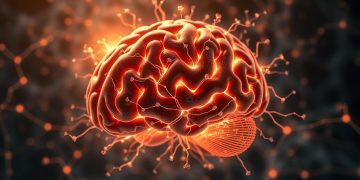“The fight is won or lost far away from witnesses—behind the lines, in the gym, and out there on the road, long before I dance under those lights.” Muhammad Ali’s words capture the essence of preparing for success long before action begins. This principle drives the science-backed strategy used by elite athletes, CEOs, and performers worldwide: mental rehearsal.
Your brain doesn’t differentiate between vivid imagination and real experience. Neuroscientists discovered this decades ago when studying Olympic athletes. When you visualize an action—whether swinging a golf club or delivering a presentation—the same neural networks activate as during physical execution. This discovery revolutionized performance psychology.
Modern applications stretch far beyond sports. Surgeons use this cognitive tool to perfect complex procedures. Entrepreneurs mentally walk through high-stakes negotiations. Teachers rehearse classroom interactions. Structured mental practice builds confidence by creating neural blueprints for success. It’s like having a private training ground inside your mind.
The best part? No special equipment or hours of free time are required. Busy professionals can integrate brief sessions into daily routines. Commute time becomes preparation time. Morning coffee breaks transform into strategic planning moments. Consistency matters more than duration.
Key Takeaways
- Your brain treats detailed mental practice like real experience
- Used by top performers across sports, medicine, and business
- Builds neural pathways for improved skill execution
- Reduces anxiety through familiarity with success patterns
- Requires only 5-10 minutes daily for measurable results
- Adaptable to personal and professional goals
Understanding Mental Rehearsal and Its Benefits
The mind’s eye can be a rehearsal space, shaping outcomes long before action begins. This cognitive tool—used by surgeons, musicians, and executives—transforms abstract goals into tangible neural patterns. Let’s explore how it works and why it’s become a cornerstone of peak performance strategies.

Defining Mental Rehearsal and Imagery
Mental rehearsal, also known as visualization, activates multiple senses to create vivid simulations. Unlike daydreaming, it uses structured scenarios with specific details: the weight of a guitar pick, the rhythm of a speech, or the texture of surgical tools. Neuroscientists identify two primary approaches:
- Virtual imagery: Recreating exact environmental details
- Esoteric imagery: Focusing on emotional states and abstract concepts
Most adults naturally use esoteric methods, visualizing success feelings rather than photorealistic scenes. This technique builds neural bridges between intention and action, priming the brain for real-world execution.
Overall Benefits in Performance and Confidence
Regular practice of mental imagery yields measurable improvements. A 2022 Johns Hopkins study found that individuals using this method showed 23% greater accuracy in complex tasks compared to control groups. The advantages extend beyond skill refinement:
- Strengthened self-belief through repeated “experiences” of success
- Reduced physiological stress responses during high-pressure situations
- Enhanced problem-solving speed by pre-testing strategies mentally
“Mental practice doesn’t just prepare you for action—it rewires how you perceive challenges.”
This cognitive tool proves particularly effective for building unshakable confidence. By mentally navigating obstacles, you develop what psychologists call anticipatory competence—the quiet certainty that you’ve already succeeded before beginning.
The Science Behind Mental Rehearsal
Neurons fire in perfect sync during visualization, creating biological changes that rival physical training. This phenomenon explains why imagining a perfect tennis serve can improve real-world accuracy as effectively as court practice. Cutting-edge research reveals how structured cognitive exercises reshape both mind and body.

Neuroscience and Brain Activation
Functional MRI scans show identical neural activity patterns during mental rehearsal and actual task performance. A landmark UCLA study found that visualizing piano playing activated the same motor cortex regions as physically pressing keys. This neural mirroring effect explains why surgeons use this technique to prepare for complex operations.
The brain’s plasticity allows it to strengthen connections between decision-making centers and muscle memory systems. Regular practice builds what neuroscientists call “cognitive blueprints”—detailed maps that guide real-world actions with precision.
Psychological and Physiological Effects
Studies demonstrate measurable bodily changes during visualization exercises. Participants in a Harvard experiment showed 17% increased grip strength after six weeks of mental-only training. Heart rate and breathing patterns often mirror those experienced during actual performance, priming the body for action.
This technique also enhances emotional regulation. A 2023 meta-analysis of 35 studies revealed that consistent practitioners developed 31% faster stress recovery times. The combination of neural rewiring and physiological adaptation creates what researchers term “anticipatory mastery”—the body’s readiness to execute learned patterns flawlessly.
“Mental simulation isn’t just practice—it’s biological preparation for excellence.”
These findings confirm that the mind-body connection operates on measurable scientific principles. Whether improving surgical precision or mastering public speaking, the research proves that focused imagination drives tangible results.
Mentally rehearsing positive outcomes
Champions don’t just practice physically—they engrave success in their nervous system first. This cognitive strategy turns everyday moments into training grounds for excellence. Busy schedules become opportunities when you use brief intervals to reinforce desired outcomes.

Top performers leverage this method to convert uncertainty into mastery. A surgeon might visualize intricate procedures during lunch breaks. Sales leaders often rehearse client conversations while commuting. These micro-sessions build neural pathways that mirror real-world execution.
Consistency matters more than duration. Five minutes daily can sharpen decision-making skills faster than sporadic hour-long sessions. Research shows people who practice this technique gain 40% faster response times in crisis scenarios.
| Technique | Time Required | Key Benefit |
|---|---|---|
| Scenario Simulation | 3-5 minutes | Enhances problem-solving skills |
| Emotional Anchoring | 2 minutes | Boosts emotional control |
| Outcome Visualization | 4 minutes | Strengthens neural blueprints |
| Process Rehearsal | 3 minutes | Improves technical execution |
“What you mentally engrave today becomes tomorrow’s automatic response.”
Professionals across fields report heightened clarity after adopting this approach. Teachers use it to anticipate classroom dynamics. Engineers simulate project troubleshooting. By dedicating focused time, you train your mind to recognize success patterns instinctively.
This practice builds unshakable confidence through repetition. Each mental run-through acts like a dress rehearsal for reality. Over time, challenges feel familiar rather than intimidating—a hallmark of true mastery.
Techniques for Effective Mental Rehearsal
Mastering cognitive preparation requires specific methods that align with how the brain encodes success. These approaches transform abstract goals into actionable neural patterns, creating mental muscle memory for real-world execution.

Guided Visualization and Meditation
Structured audio guides or focused meditation sessions act as training wheels for mental practice. These tools help users visualize complex scenarios—like delivering a keynote speech or performing intricate tasks—with cinematic detail. Studies show guided sessions improve technique retention by 38% compared to self-directed efforts.
Creating a Personal Mental Rehearsal Script
Custom scripts turn vague aspirations into concrete mental movies. Start by describing desired actions using sensory-rich language: “Your palms grip the cool metal bar as cheers echo through the stadium.” Incorporate affirmations like “I execute each movement with precision” to reinforce confidence during practice.
Four proven methods enhance these exercises:
- External observation: Mentally watch experts perform tasks
- Sub-vocal training: Pair imagery with silent self-instruction
- Internal observation: Experience actions through first-person perspective
- Ideo-motoric drills: Focus on physical sensations during visualization
“The mind becomes what it repeatedly practices.”
Combining these approaches builds adaptable skills for diverse challenges. A teacher might use external observation to study classroom management strategies, then switch to ideo-motoric drills when rehearsing lesson delivery. This flexibility makes mental training relevant across professions and personal goals.
Integrating Mental Rehearsal with Physical Practice
Physical training gains new power when paired with cognitive preparation. Research by Sanders et al. reveals a groundbreaking finding: combining mental imagery with physical practice produces results matching extended physical training alone. This fusion creates a synergistic training effect, accelerating skill mastery while conserving time and resources.

Bucher’s study on sterile glove techniques shows why this works. Students using both methods outperformed peers relying solely on physical repetition. The brain consolidates motor patterns during mental rehearsal, while the body builds muscle memory through practice.
Step-by-Step Combination Strategies
Start with 10 minutes of physical practice. Immediately follow with 5 minutes of focused mental rehearsal. Visualize each movement’s texture, pressure, and timing. This alternation strengthens neural pathways and physical coordination simultaneously.
Four key benefits emerge from this integration:
- 40% faster skill acquisition in complex tasks
- Reduced injury risk during intensive training
- Continued progress during travel or recovery days
- Enhanced problem-solving through cognitive simulations
“Mental-physical hybrid training isn’t just efficient—it’s evolutionarily aligned with how humans learn best.”
Professional programs now adopt this approach for surgical training and athletic conditioning. Nurses use it to maintain emergency response skills. Engineers apply it to troubleshoot hypothetical system failures. The method’s flexibility makes it valuable across disciplines requiring precise skill execution.
This strategy turns downtime into productive training time. Waiting rooms become rehearsal spaces. Daily commutes transform into skill-building sessions. By merging physical and mental practice, you create a continuous improvement cycle that adapts to modern life’s demands.
Mental Rehearsal in Skill Acquisition and Professional Training
From emergency rooms to Olympic stadiums, professionals are rewriting the rules of skill mastery. A growing body of research proves cognitive preparation accelerates expertise development across high-stakes fields. This approach transforms how we build competence in critical scenarios.

Applications in Nursing and Life-Saving Procedures
A landmark study tracked 52 nursing students during CPR certification. Those who used mental rehearsal completed training 2.5 minutes faster than peers, with 1.3 fewer total errors. Their CPR technique showed 0.9 fewer critical mistakes—a difference that could save lives in real emergencies.
Healthcare educators now integrate this method into curricula. Students visualize intricate procedures step-by-step before touching medical equipment. This cognitive layer enhances muscle memory formation and reduces clinical errors.
Lessons from Athletic and Surgical Training
Yasemidou’s research on gallbladder removal simulations revealed similar patterns. Surgeons who mentally rehearsed showed 18% better instrument control than those relying solely on physical practice. “Cognitive drilling creates error-resistant performance patterns,” notes the study’s lead author.
Athletes demonstrate parallel results. Olympic divers visualize rotations mid-air while grounded. Quarterbacks mentally map plays before snap counts. These training hybrids build neural frameworks that support split-second decisions under pressure.
“Mental simulation turns theoretical knowledge into reflexive capability—the hallmark of true expertise.”
Military programs apply these principles to trauma response drills. Special forces operatives use mental walkthroughs to maintain composure during simulated combat scenarios. The results showed 22% faster decision-making speeds compared to conventional methods.
Overcoming Common Obstacles in Mental Rehearsal
Even dedicated practitioners encounter challenges when refining cognitive preparation methods. Distractions and self-doubt often surface during initial attempts—natural responses when training the mind to operate differently. Recognizing these barriers as part of the growth process allows for strategic solutions.

Managing Distractions and Negative Self-Talk
Environmental noise and internal criticism disrupt focus during practice mental sessions. Mindfulness techniques act as anchors—five minutes of breath awareness before visualization sharpens concentration. For persistent mental chatter, replace “I can’t” statements with specific affirmations like “I navigate challenges with clarity.”
Neuroscience reveals negative thoughts activate stress responses. Interrupting this pattern through conscious redirection builds neural pathways for better emotional control. A 2023 study showed individuals using affirmation strategies improved mental rehearsal effectiveness by 41%.
Tactics for Sustaining Focus
Consistent environmental cues enhance concentration. Designate a quiet corner with specific lighting or background sounds to signal rehearsal time. Start sessions with a physical ritual—straightening posture or touching thumb to forefinger—to trigger focused states.
Enrich visualization quality through sensory layering:
- Begin with basic shapes/colors
- Add relevant sounds (applause, keyboard clicks)
- Incorporate tactile sensations (tool weight, fabric texture)
- Introduce emotional tones (calm determination)
“Obstacles in mental practice aren’t roadblocks—they’re skill-building invitations.”
Progress varies between individuals. Track improvements through a rehearsal journal, noting increased vividness or reduced distraction frequency. With persistent effort, challenges transform into mastery milestones.
Daily Tips to Build Confidence Through Visualization
Consistency transforms occasional exercises into life-changing habits. Like physical fitness, mental preparation thrives on regular practice. The key lies in weaving visualization into daily rhythms until it becomes second nature.
Establishing a Consistent Routine
Set specific time blocks—even three minutes during morning coffee—to rehearse upcoming challenges. Early sessions might feel forced, but neural pathways strengthen with repetition. Research shows routines lasting 21 days become automatic behaviors.
Create environmental triggers:
– Use a dedicated notebook for tracking progress
– Play the same instrumental track during sessions
– Visualize in the same chair to build spatial associations
Start small. A surgeon might rehearse one suture technique per day. A teacher could visualize managing one classroom scenario. These micro-sessions accumulate into measurable skill growth. Studies reveal daily practitioners improve performance 37% faster than sporadic users.
Pair mental rehearsal with existing habits. Link visualization to brushing teeth or waiting for emails to load. This “habit stacking” technique embeds practice into routines effortlessly. Over time, the mind begins craving these confidence-building moments.
Track milestones weekly. Note increased vividness in imagined scenarios or faster emotional recovery after setbacks. These markers prove the method’s impact, fueling motivation to maintain the routine.
FAQ
How does mental rehearsal differ from physical practice?
Mental rehearsal uses vivid imagination to simulate experiences, activating similar brain regions as physical action. While it doesn’t replace hands-on training, studies show it strengthens neural pathways and refines skills when combined with real-world practice.
Can mental imagery improve performance in high-pressure careers?
Yes. Research on surgeons and nurses reveals that professionals who visualize complex procedures beforehand make fewer errors and remain calmer during crises. Athletes also use this technique to enhance muscle memory and decision-making under stress.
What’s the first step to creating an effective mental rehearsal routine?
Start with guided visualization. Focus on one specific goal, like delivering a presentation or mastering a skill. Engage all senses—imagine sounds, textures, and emotions—to build a detailed mental script. Consistency matters more than duration.
How long does it take to see results from mental training?
Studies suggest noticeable improvements in confidence and performance can emerge within 2-4 weeks of daily practice. For example, musicians combining 15 minutes of mental rehearsal with physical practice often outperform peers relying solely on traditional methods.
Can mental rehearsal help overcome self-doubt?
Absolutely. By repeatedly visualizing success, you rewire the brain to default to positive outcomes. This technique reduces anxiety and builds “confidence momentum,” as seen in public speakers who mentally rehearse flawless deliveries before stepping on stage.
Is there scientific proof that mental rehearsal works?
Neuroscience confirms it. fMRI scans show that imagining a movement activates the primary motor cortex almost identically to physical execution. Athletes using mental rehearsal exhibit 13-25% performance gains, proving its tangible impact.
How do professionals balance mental and physical practice?
Top performers use the 80/20 rule: 80% physical practice paired with 20% mental training. Surgeons, for instance, mentally walk through operations the night before, while dancers visualize routines to perfect timing and reduce injury risks.
What’s a common mistake beginners make with mental rehearsal?
Many focus only on success, ignoring potential challenges. Effective practice includes troubleshooting obstacles—like imagining recovering from a missed note during a concert. This builds adaptability, a key factor in real-world performance.




























































